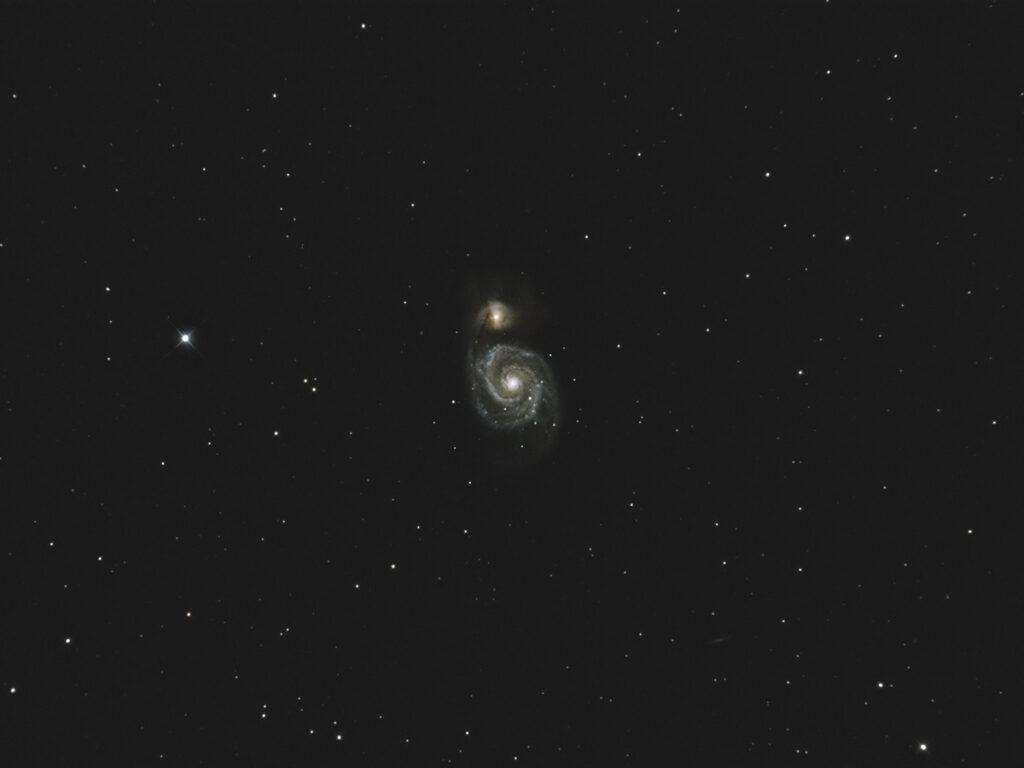
Telescope: Astro-Tech 8” f/8 Ritchey-Chretien, Orion Atlas EQ-G
Camera: QHY 367c Pro, -20C, Baader Mk III MPCC, GSO IR Blocking Filter
Guide scope: Astro-Tech 60mm, ZWO ASI120MM mini, PHD2
Exposure: 33x300sec, gain 2800, offset 50, saved as FITS, dithered every 2 images
Darks: 32, -20C, gain 2800, offset 50, saved as FITS
Flats: 64×0.3sec, Tee shirt flats taken at dusk
Average Light Pollution: Red zone, Bortle 8, fair transparency
Lensed Sky Quality Meter: 18.5
Stacking: Average, 1 sigma clip
White Balance: Nebulosity Automatic
Software: SharpCap Pro, Deep Sky Stacker, Nebulosity, Photoshop
M51 is a beautiful face-on spiral galaxy in Canes Venatici, just south of Alkaid, the bright star that lies at the end of the Big Dipper’s handle. The spiral arm that appears to connect M51 to the nearby companion (NGC 5195) is a bit of an illusion. The companion actually lies behind M51, and if you look closely you can see that the spiral arm is silhouetted against the background galaxy. Modern observations and computer modeling suggest that the companion has made at least two passes through the main disk of M51. During the first, it approached M51 from behind, passed through the face of the galaxy, swung around in an orbit that took it in front, and then back through the disk where it lies now behind M51. These passes set off bursts of star formation that gives the arms of M51 their beautiful blue color.
M51 currently rises in the northeast during the early evening.
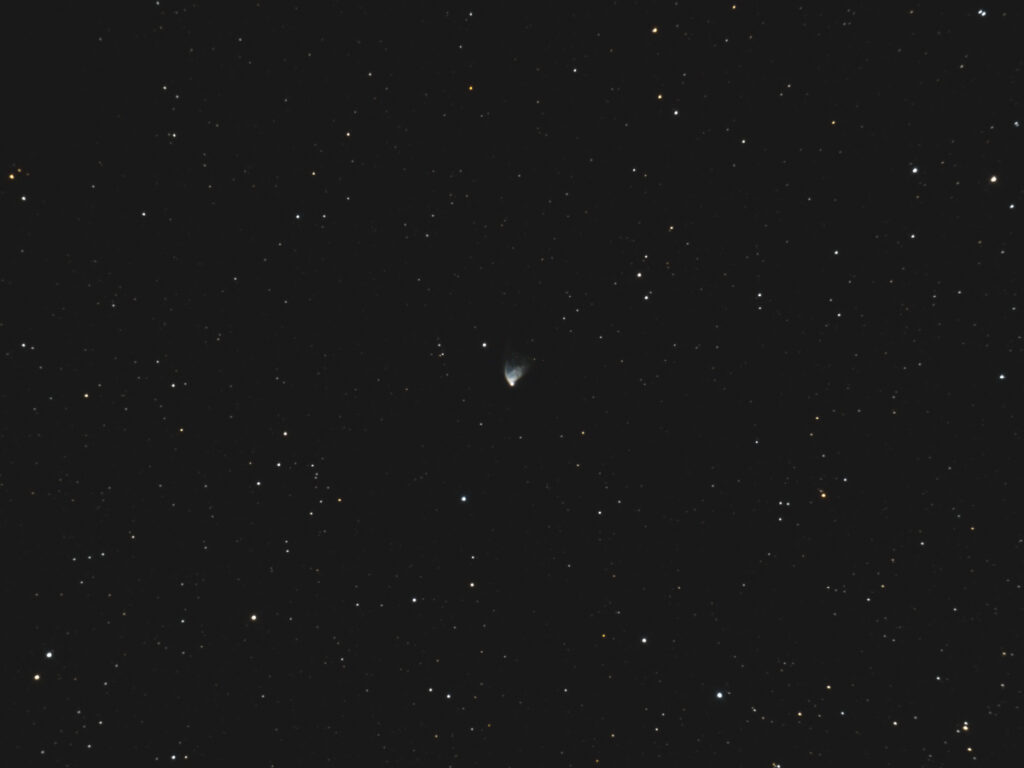

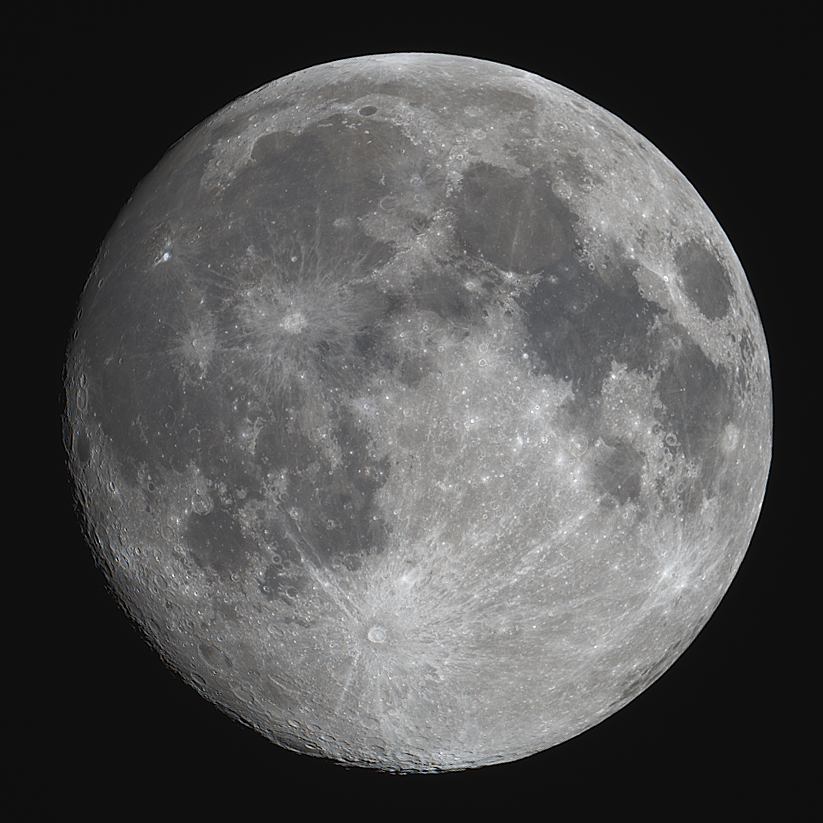
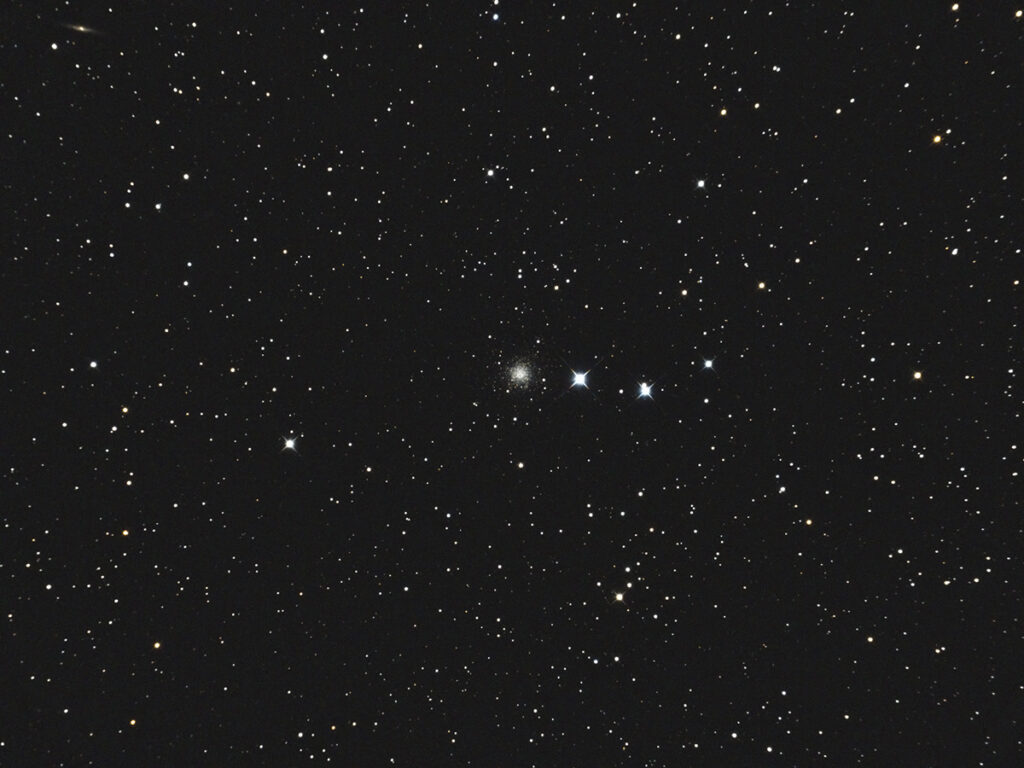
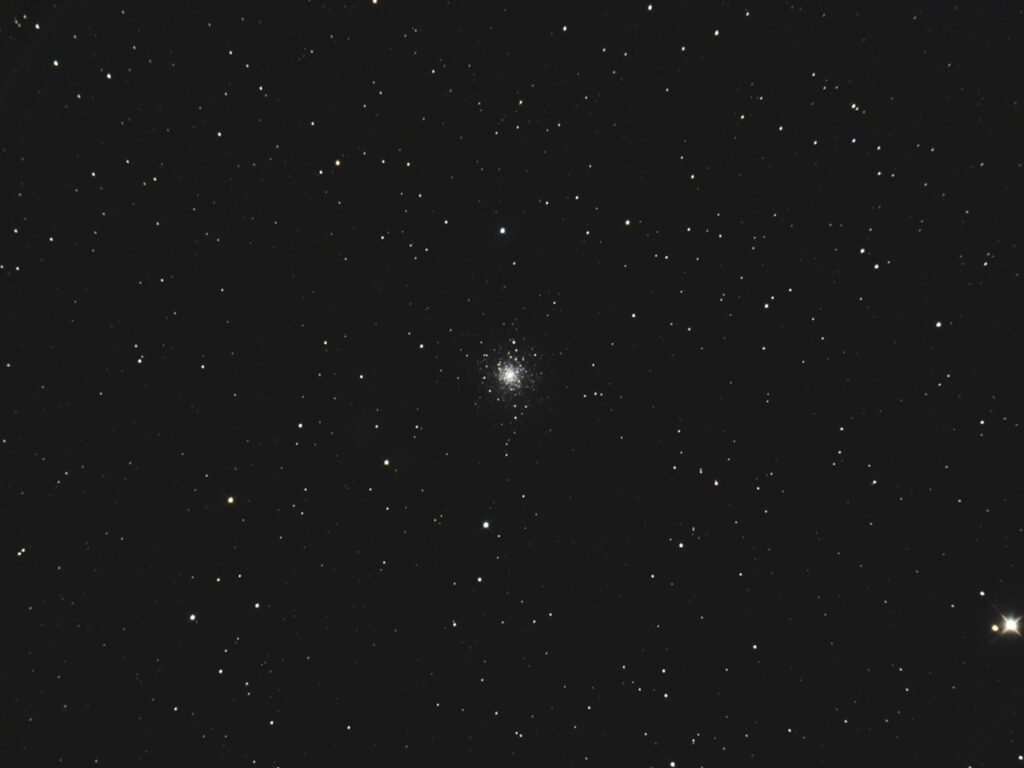
Recent Comments